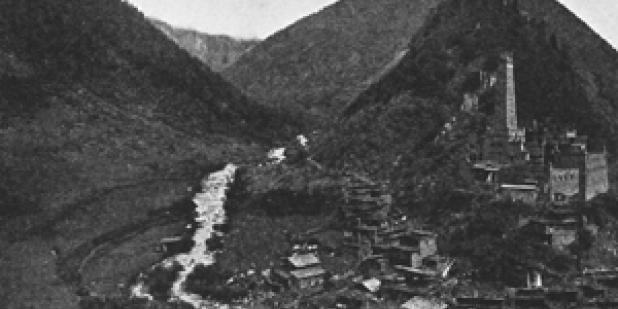Happy Lunar New Year from the USC US-China Institute!
Arts of the Frontier during the Sino-Japanese War-Workshop - Part I
Northwestern University presents a workshop that addresses the problem of primitive cosmopolitanism during 1937-1945 when the Republican government, artists and intellectuals moved the capital in exodus to the interior during the Sino-Japanese war.
Where

This workshop and lecture address the problem of primitive cosmopolitanism during 1937-1945 when the Republican government, artists and intellectuals moved the capital in exodus to the interior during the Sino-Japanese war. In close proximity to the ethnic minorities away from the coast, researchers and artists theorized the problem of the modern Han Chinese identity through their proximity to Tibetan, Miao, Qiang and Yi groups in the mountainous interior. Newly based in Chongqing, Sichuan Province, the Republican government was pitted against the Communist Proletariat shadow government to the north, and, as such, actively researched the linguistic, cultural, archaeological and anthropological dimensions of this new proximity to non-Han peoples. A Shanghai-based, coastal modernity (inflected with treaty port art and culture) was dismantled as researchers theorized that primitive forms of Chinese culture were still preserved in the interior away from modern European, American, and Japanese (corrupting) cultural forces. We will also consider the ‘other frontier’: along China’s Himalayan border with India and the impact of models of colonial fieldwork in those remote mountainous regions.
This workshop, held in two parts, will bring together scholars who will assess issues of the frontier and ethnographic difference on a broader theoretical level, with special attention to the grammar of language and ornament. Our lunchtime keynote speaker (October 15, 2011) will consider theories of the ‘barbarian’ in classical Chinese. There will also be a lecture (October 17, 2011) by an architectural historian who will explore 19th-20th c. European ethnographic research particularly in Southeast Asia and the collection of natural history and design specimens. Models of European ethnographic research become a cornerstone for post-imperial Chinese (dynastic China ends 1911) researchers who adopt European visual regimes as they colonize the Chinese multicultural interior during the Sino-Japanese war. Other speakers will address historical circumstances within China with reference to larger problems of a ‘belatedly’ modern, post semi-colonial China and we will consider the question of how writers responded to the potential absence or disappearance of China due to the threat of war.
Participants:
Julia Andrews, Art History, Ohio State University Sarah E. Fraser, Department of Art History, Northwestern University Huang Zongxian, Fine Arts School, Sichuan University Robert Linrothe, Department of Art History, Northwestern University Felicity Lufkin, Fairbanks Center, Harvard University Sypros Papapetros, School of Architecture, Princeton University Kuiyi Shen, Art History, University of California, San Diego Peter Shen, East Asian Languages and Literature, Northwestern University Wenbin Peng, Anthropology, University of British Columbia Don Wyatt, History Department, Middlebury College
Discussants:
Melissa Macauley,Peter Carrol, Sarah Jacoby, Antonio Terrone, Departments of History and Religion, Northwestern University
Click here for information on Part II of the workshop.
Featured Articles
We note the passing of many prominent individuals who played some role in U.S.-China affairs, whether in politics, economics or in helping people in one place understand the other.
Events
Ying Zhu looks at new developments for Chinese and global streaming services.
David Zweig examines China's talent recruitment efforts, particularly towards those scientists and engineers who left China for further study. U.S. universities, labs and companies have long brought in talent from China. Are such people still welcome?






